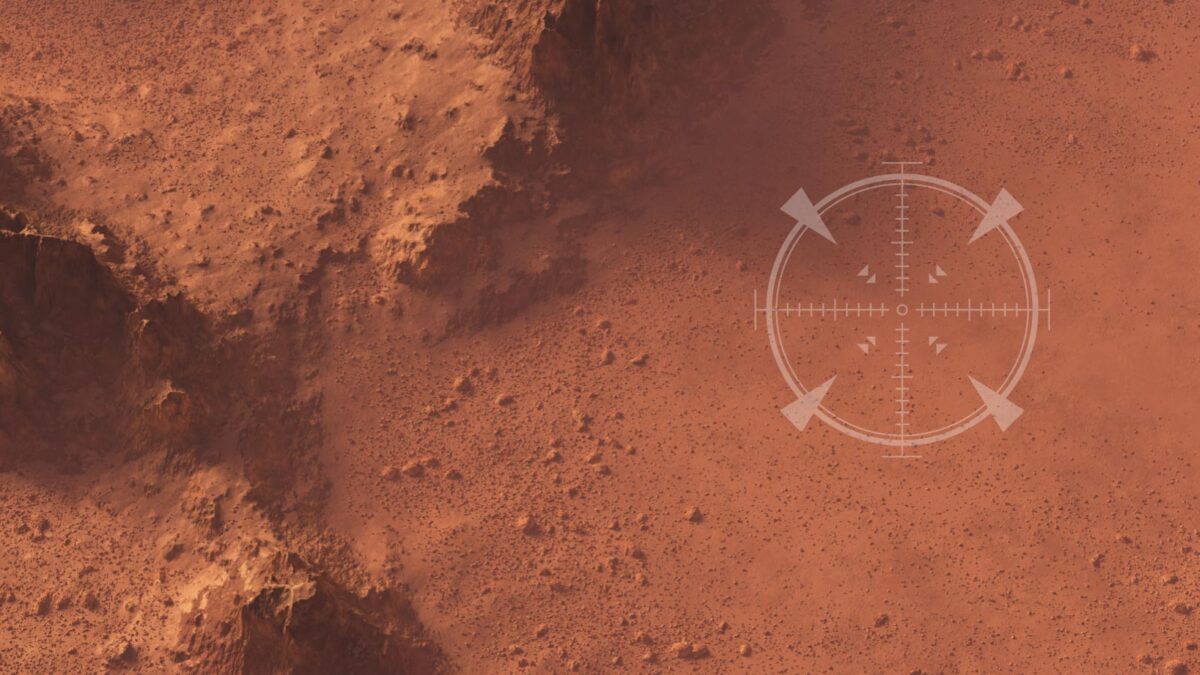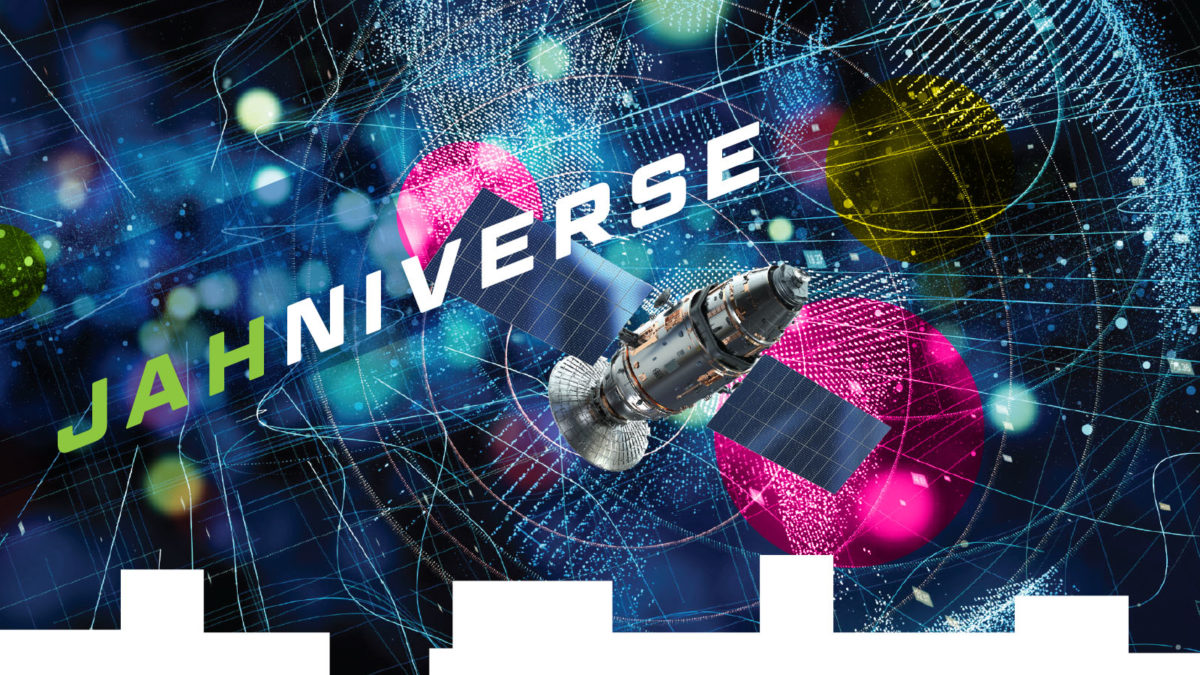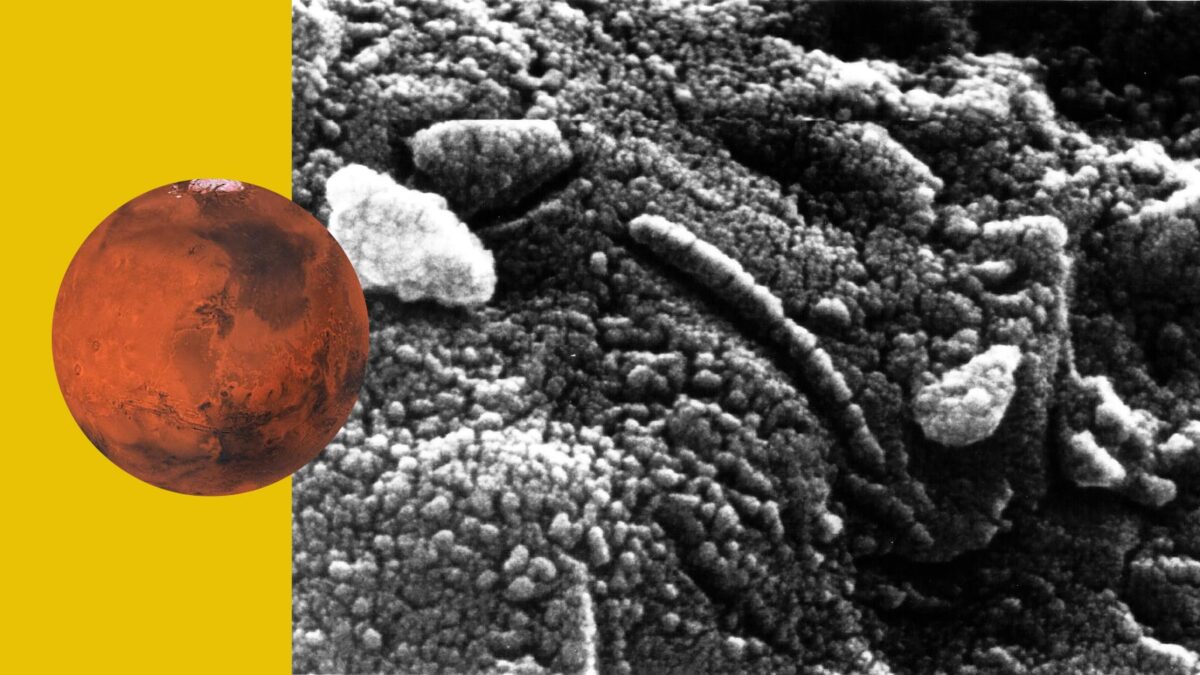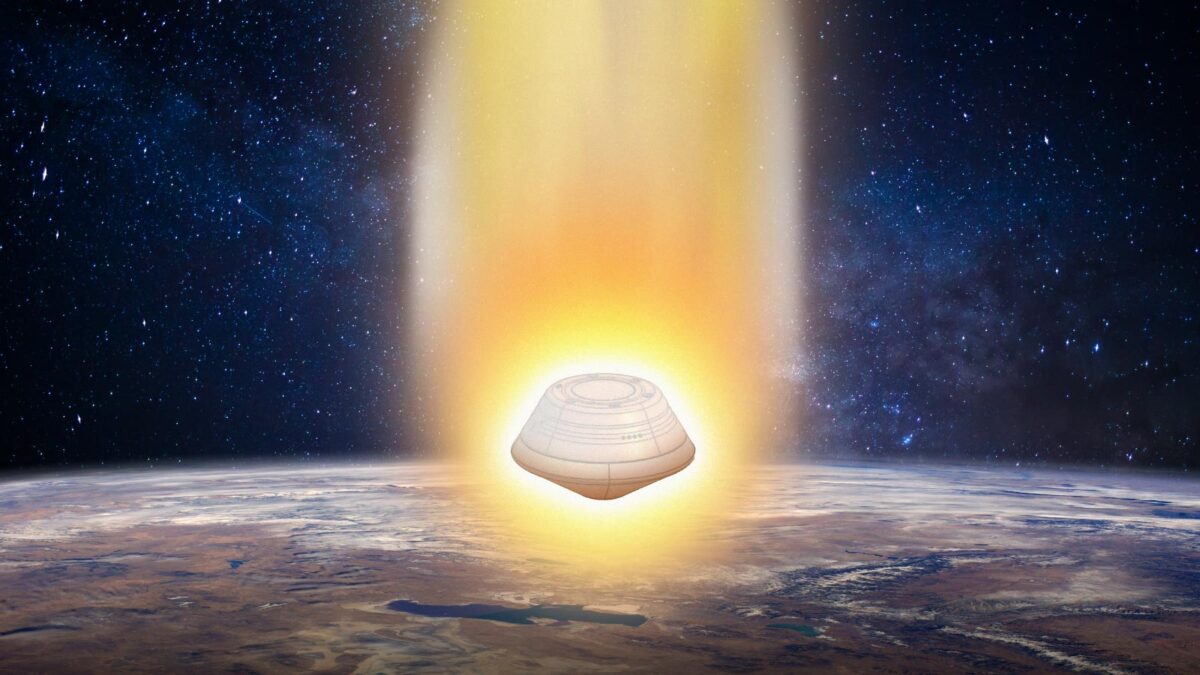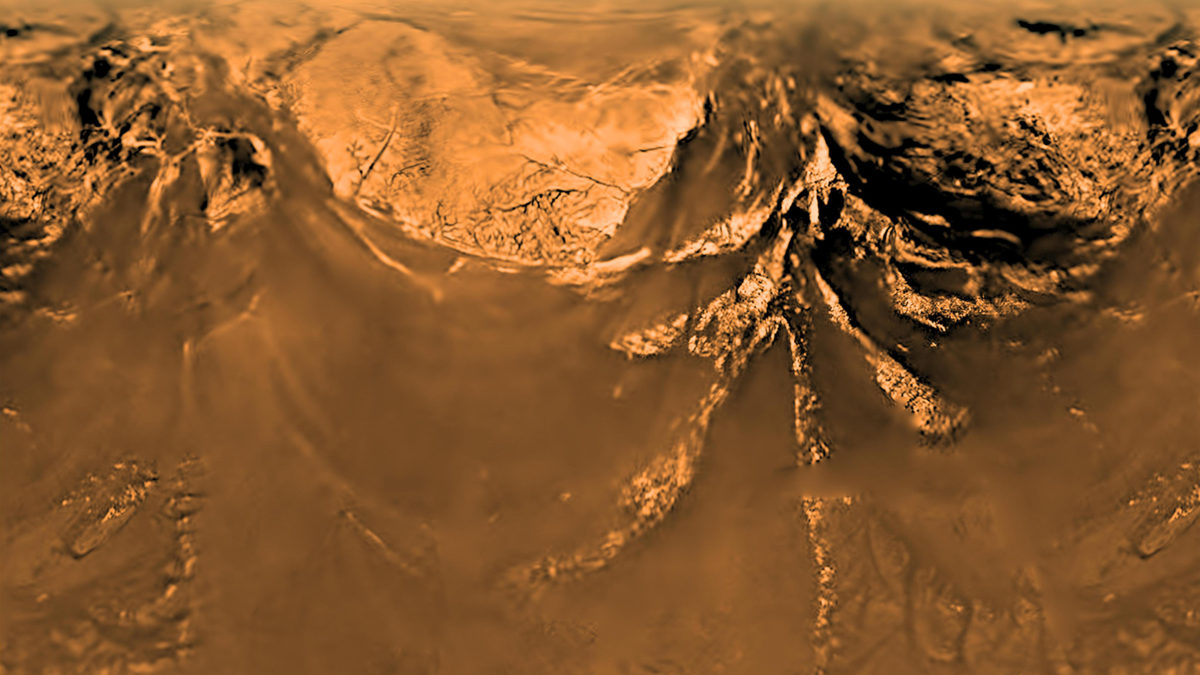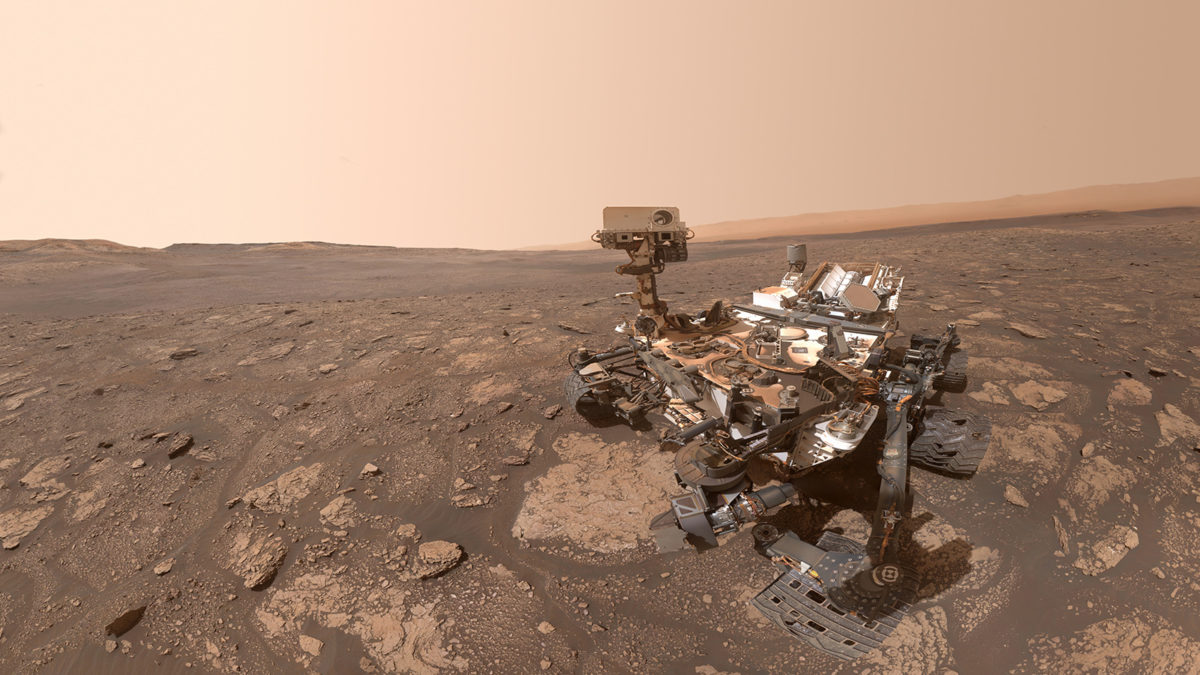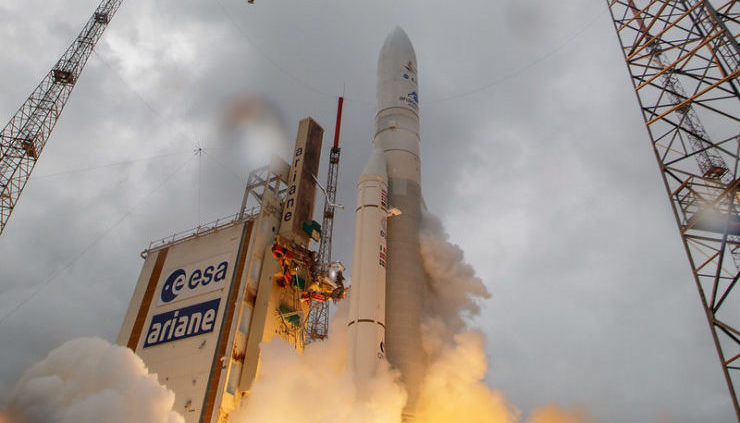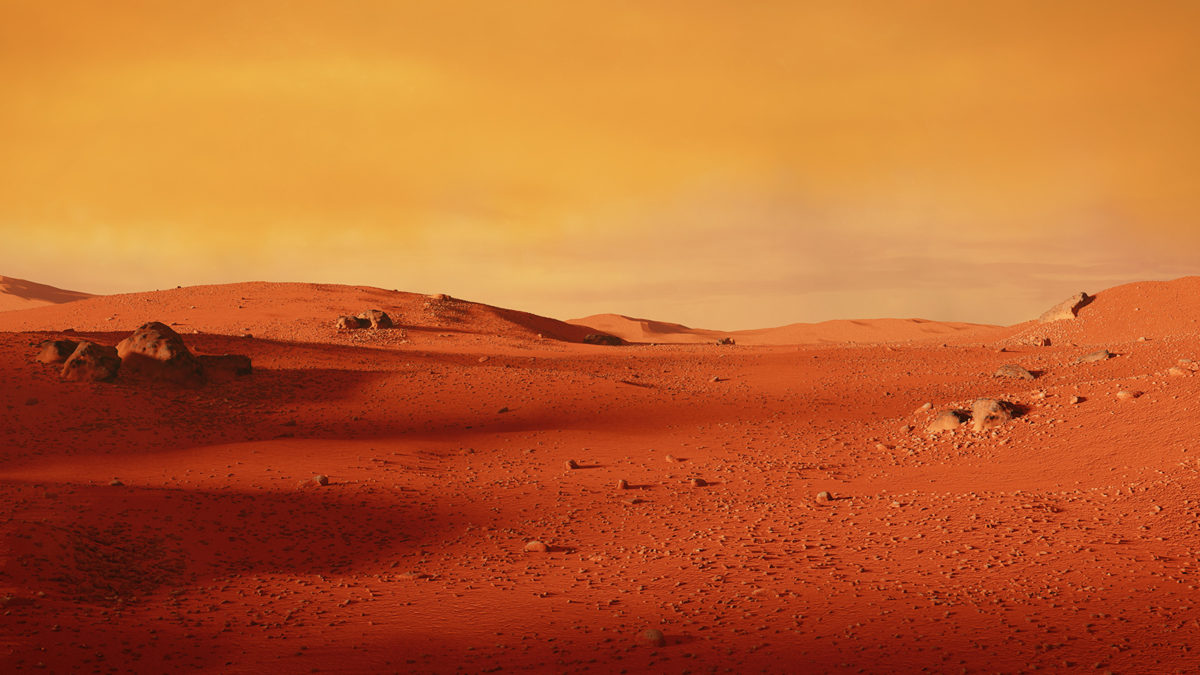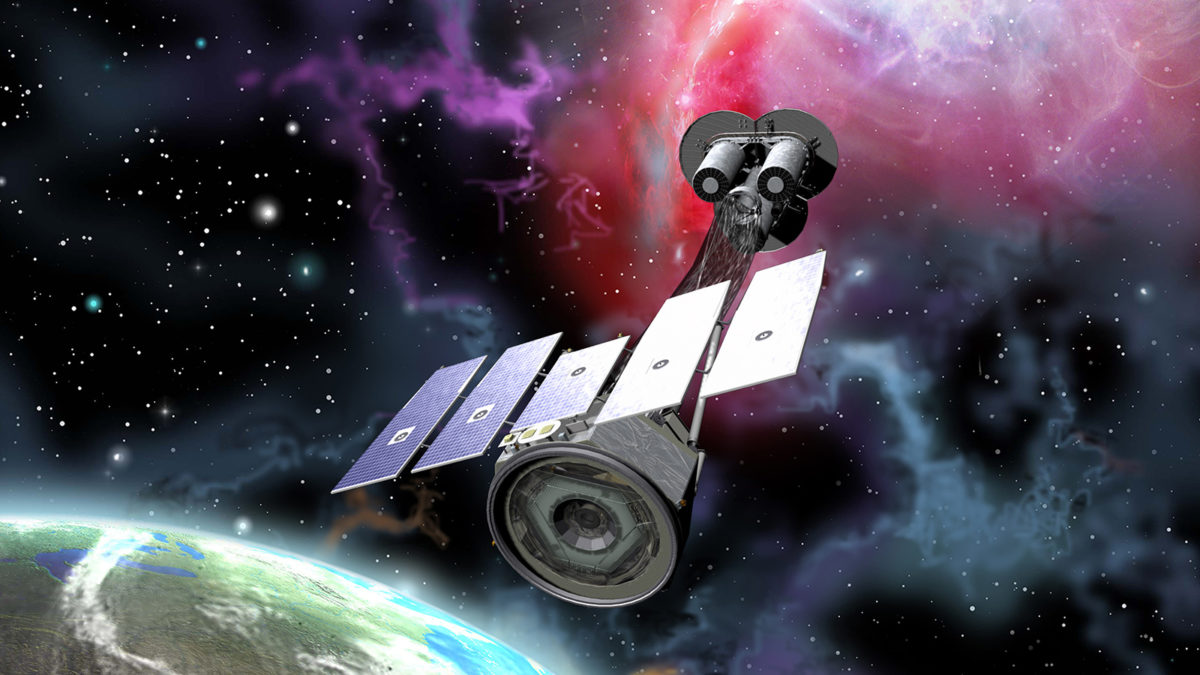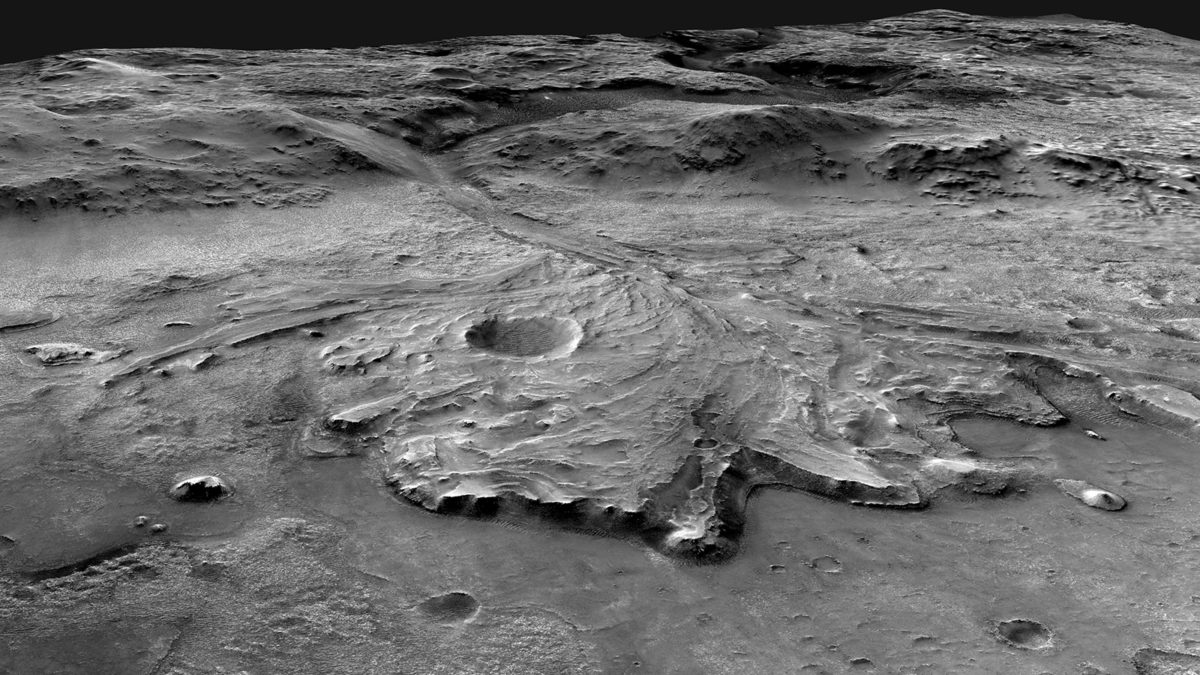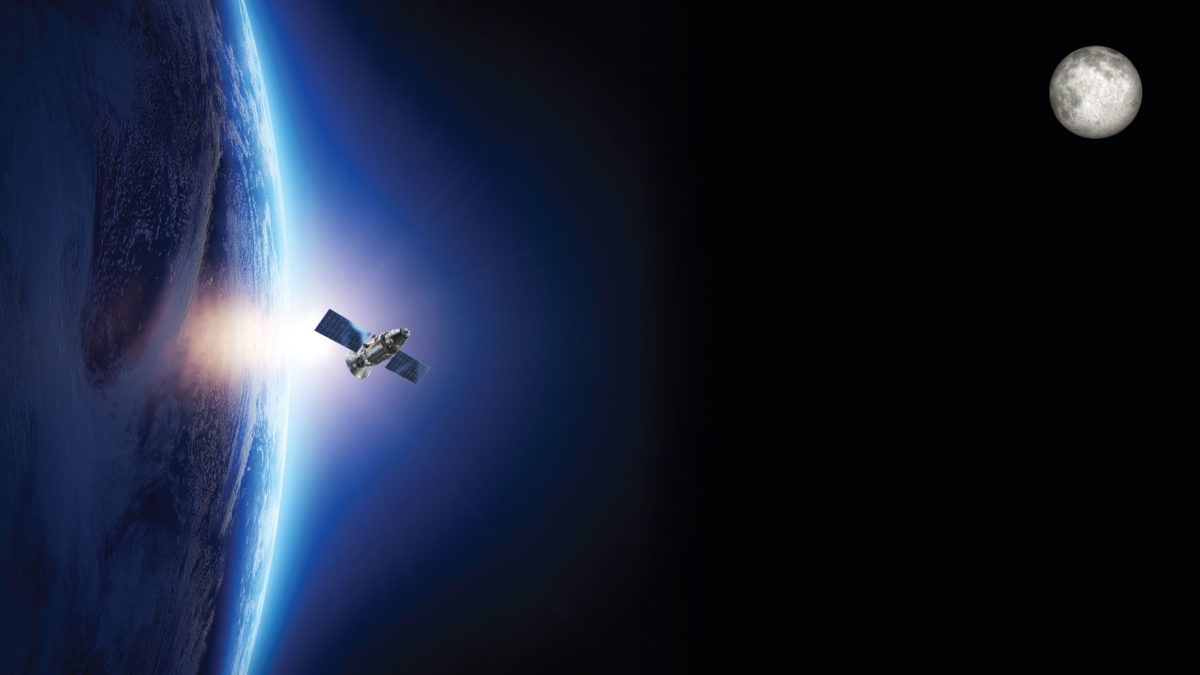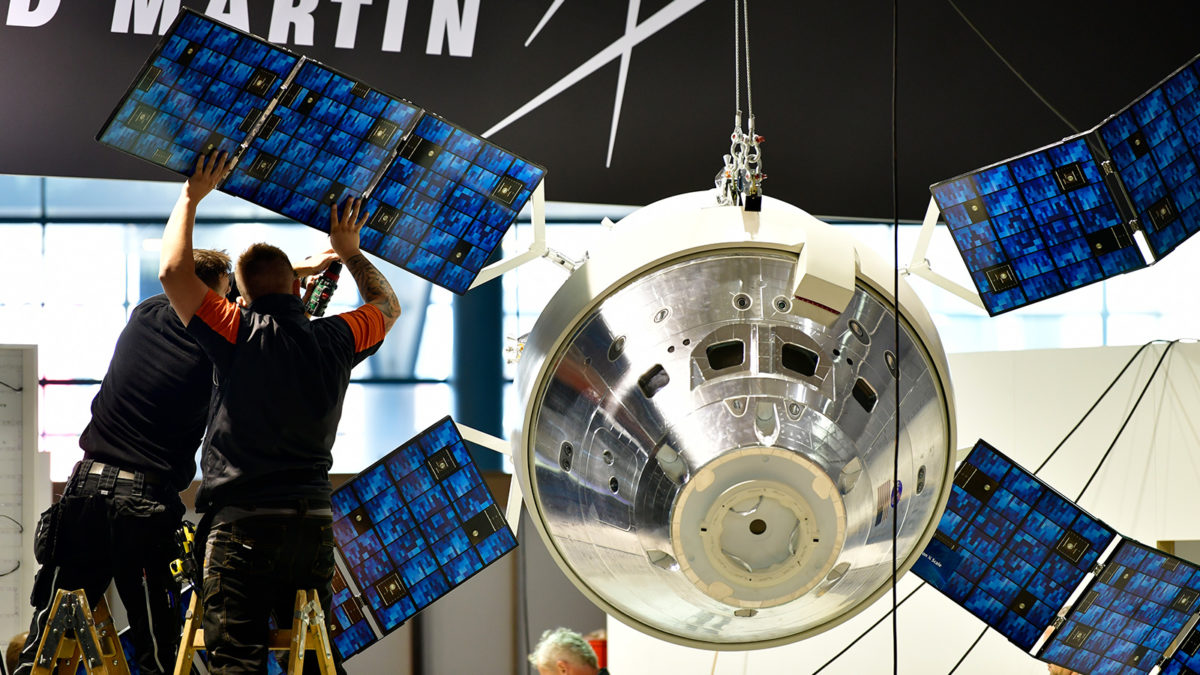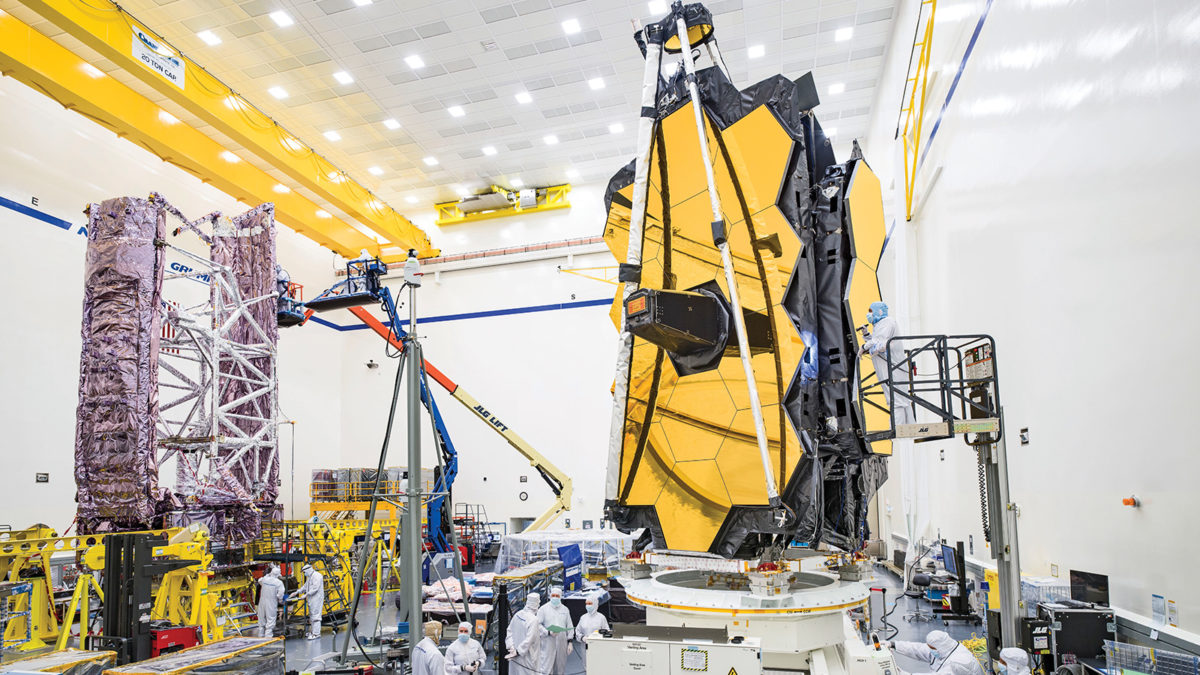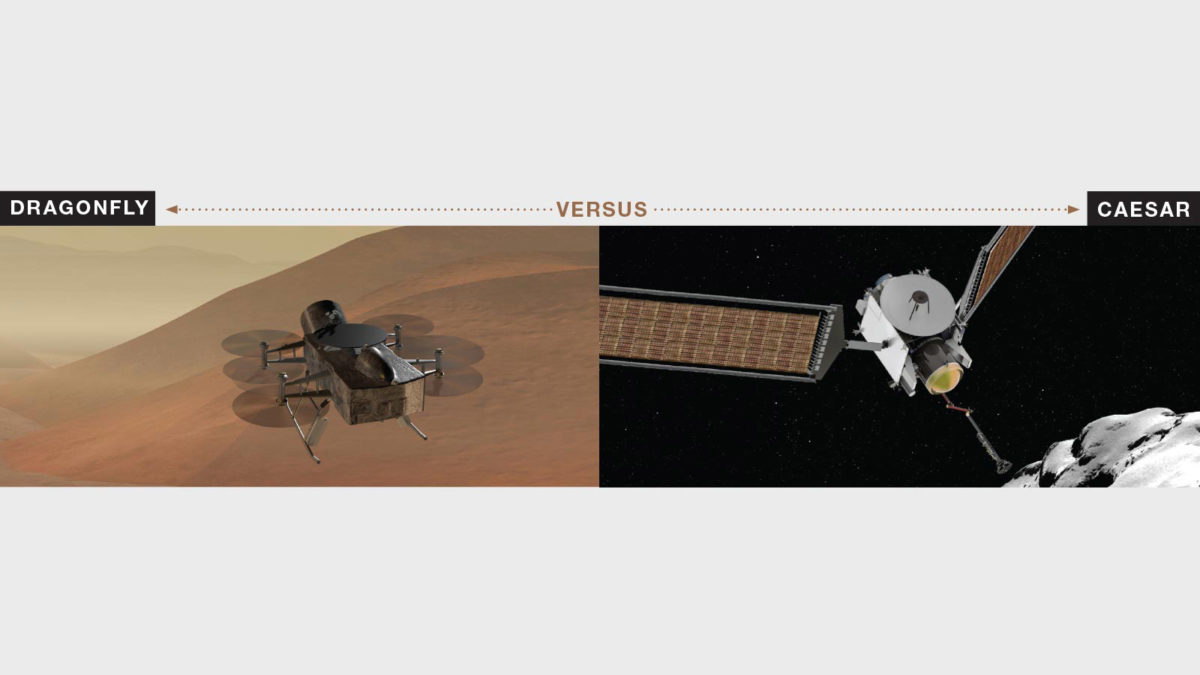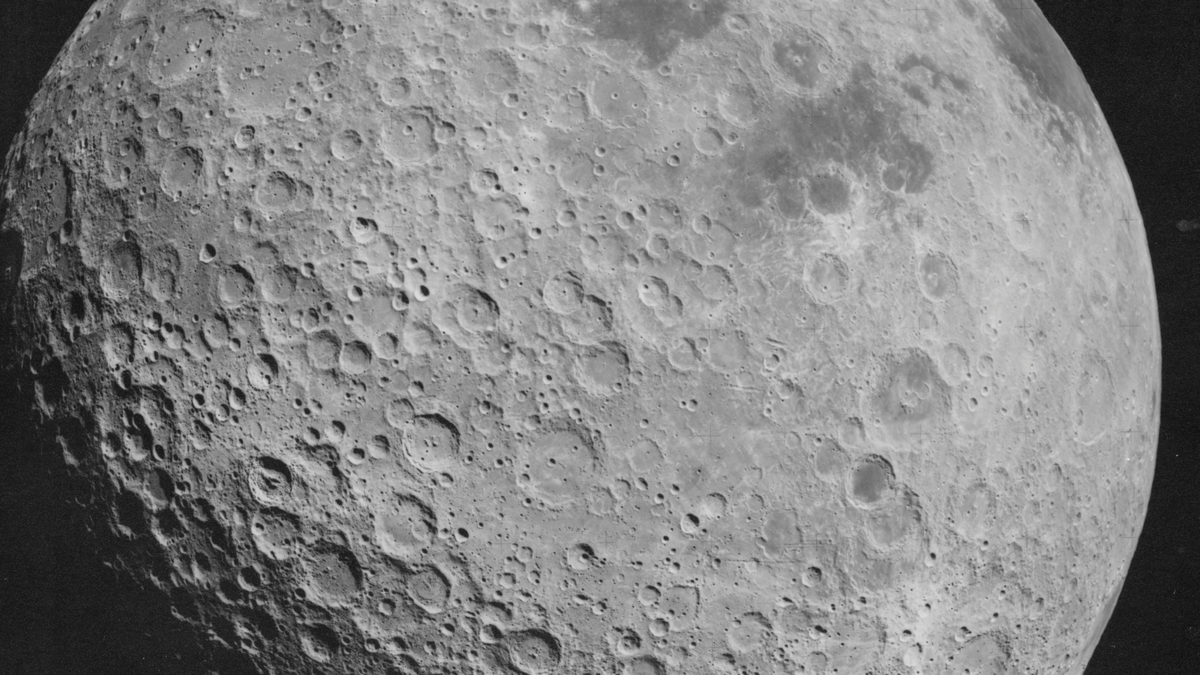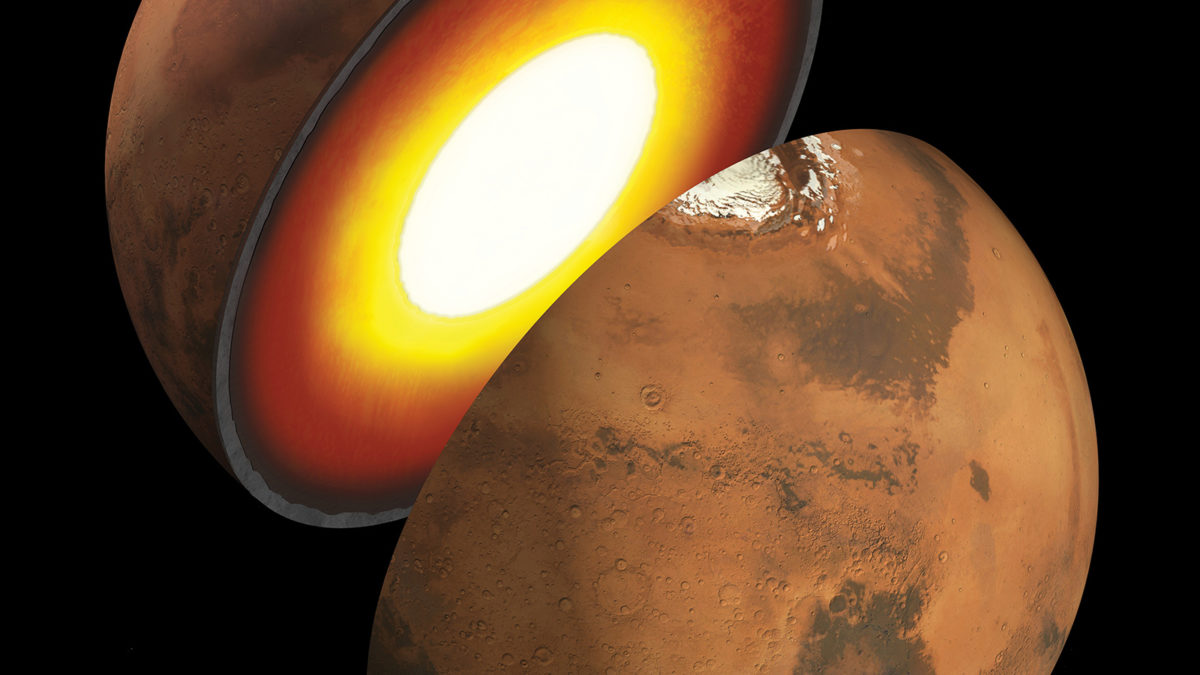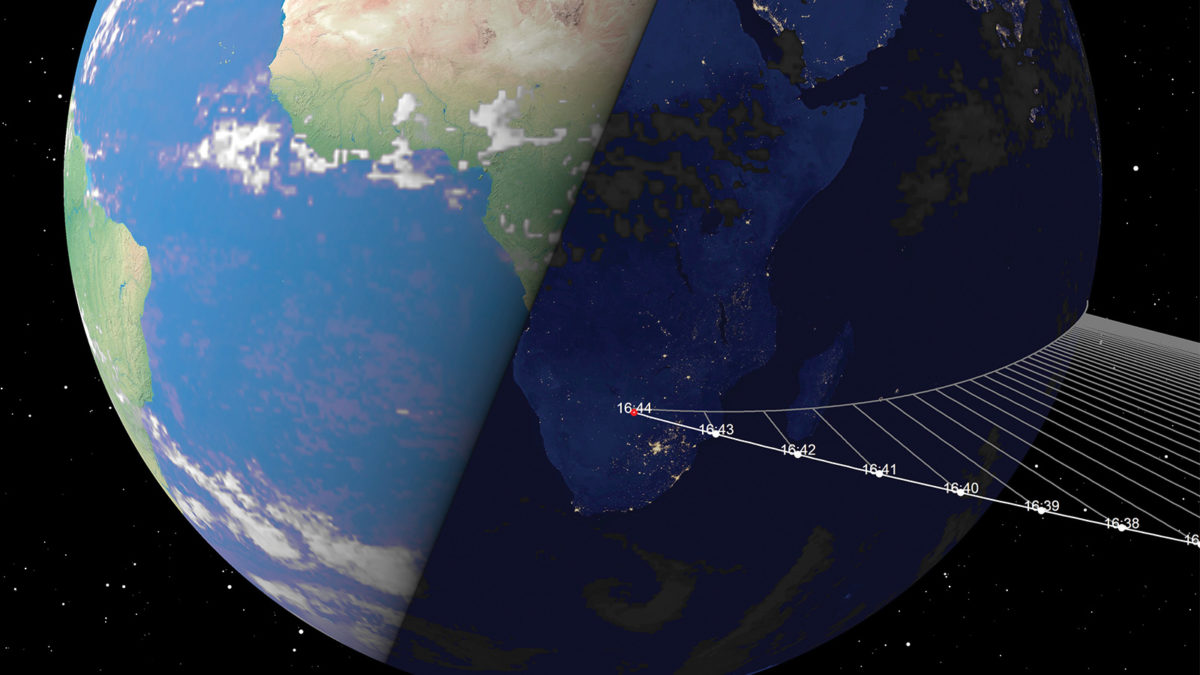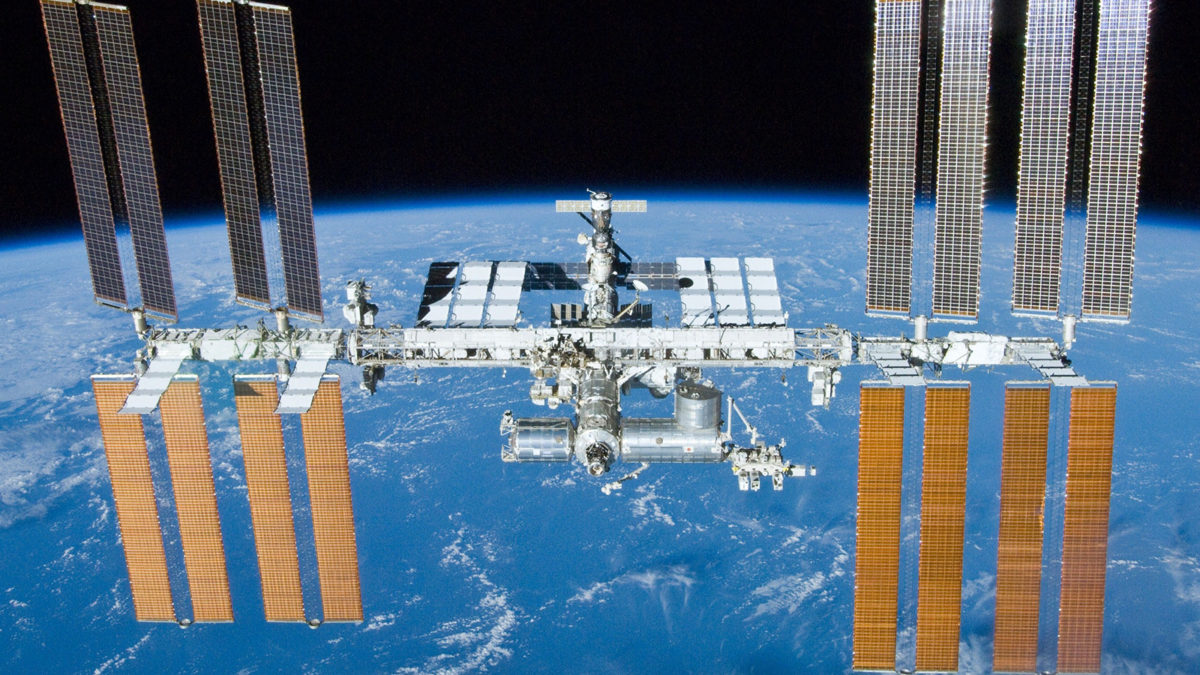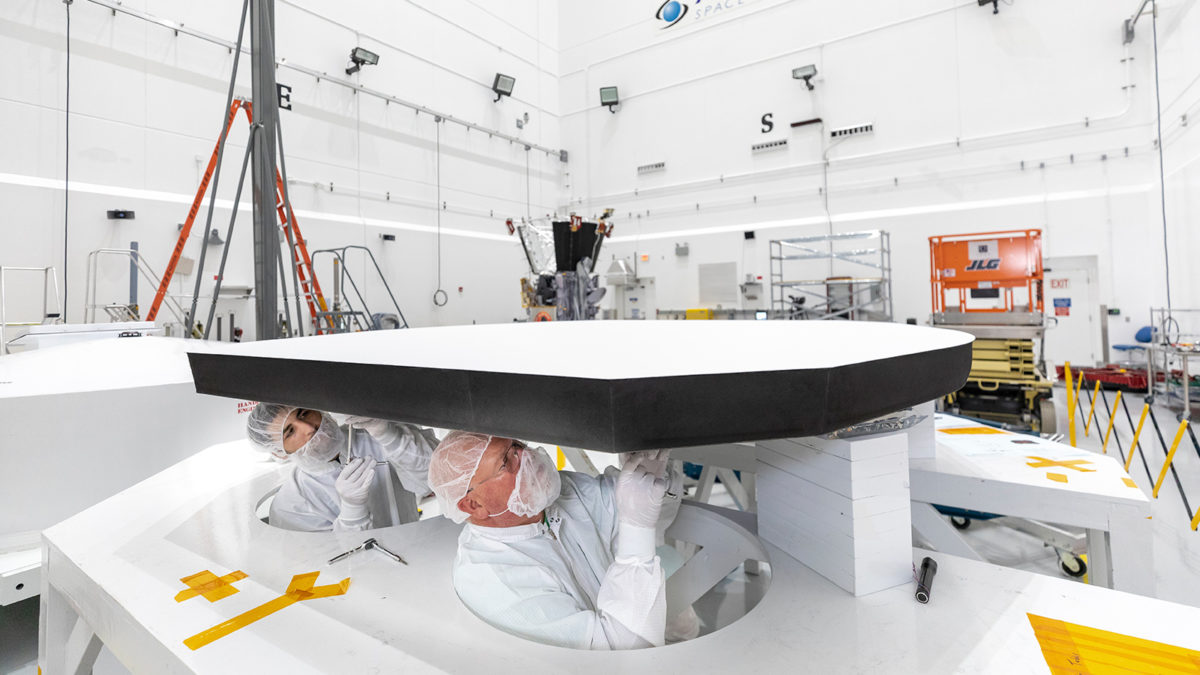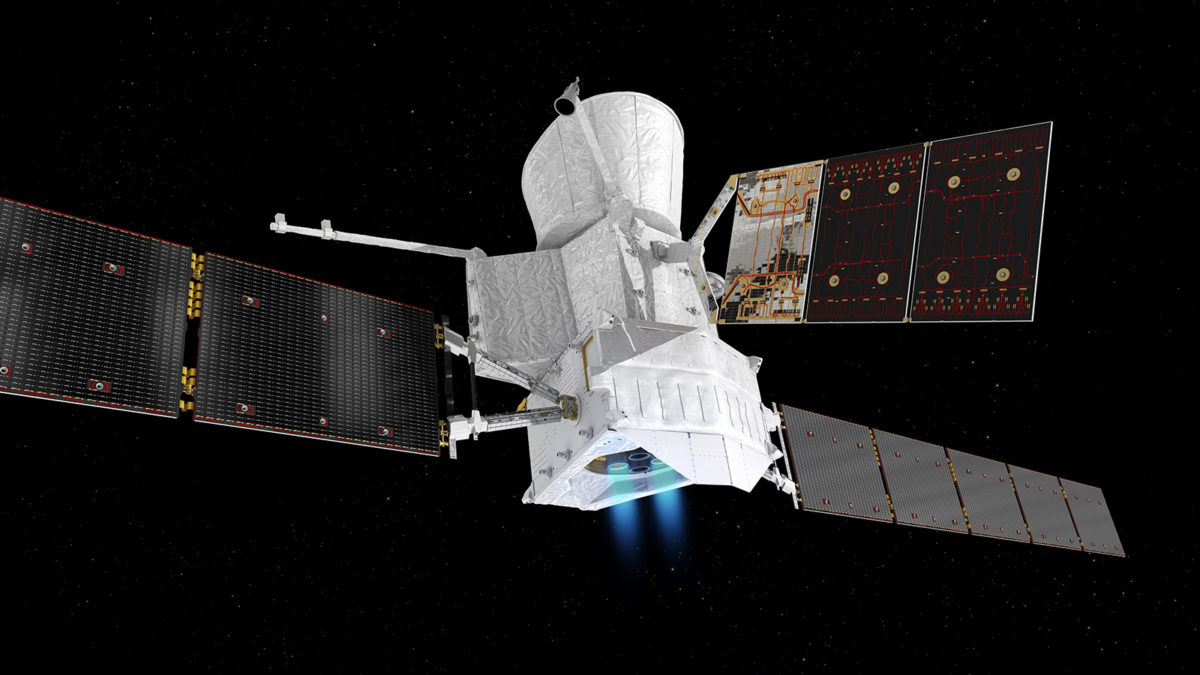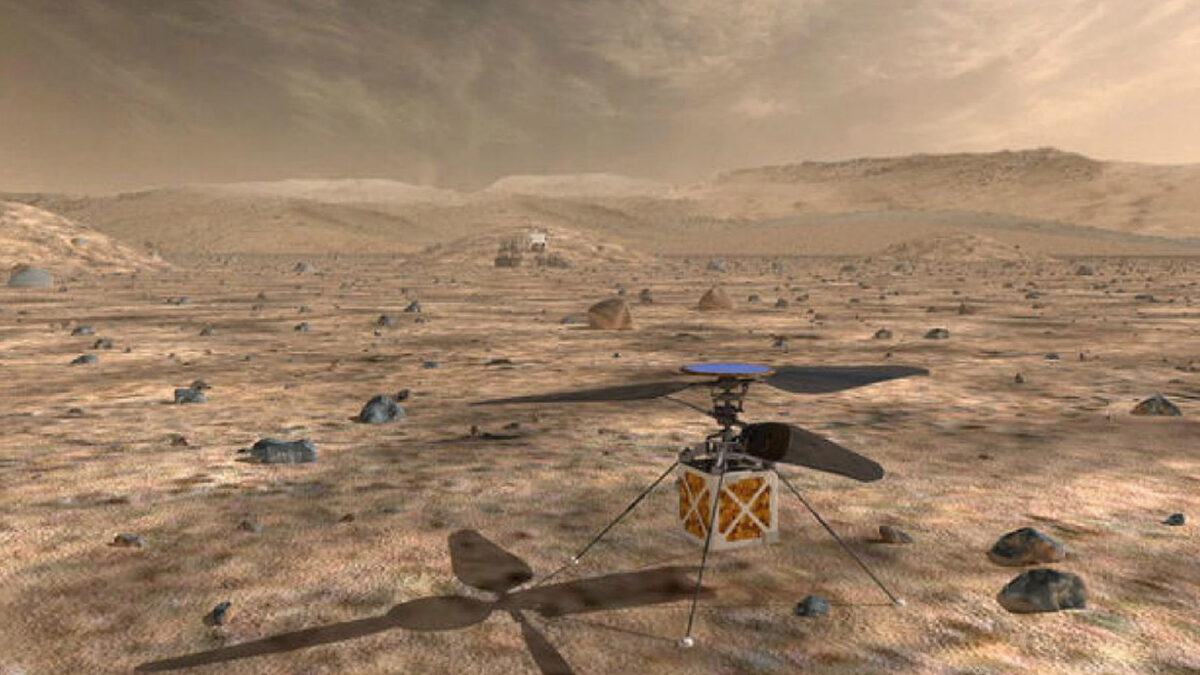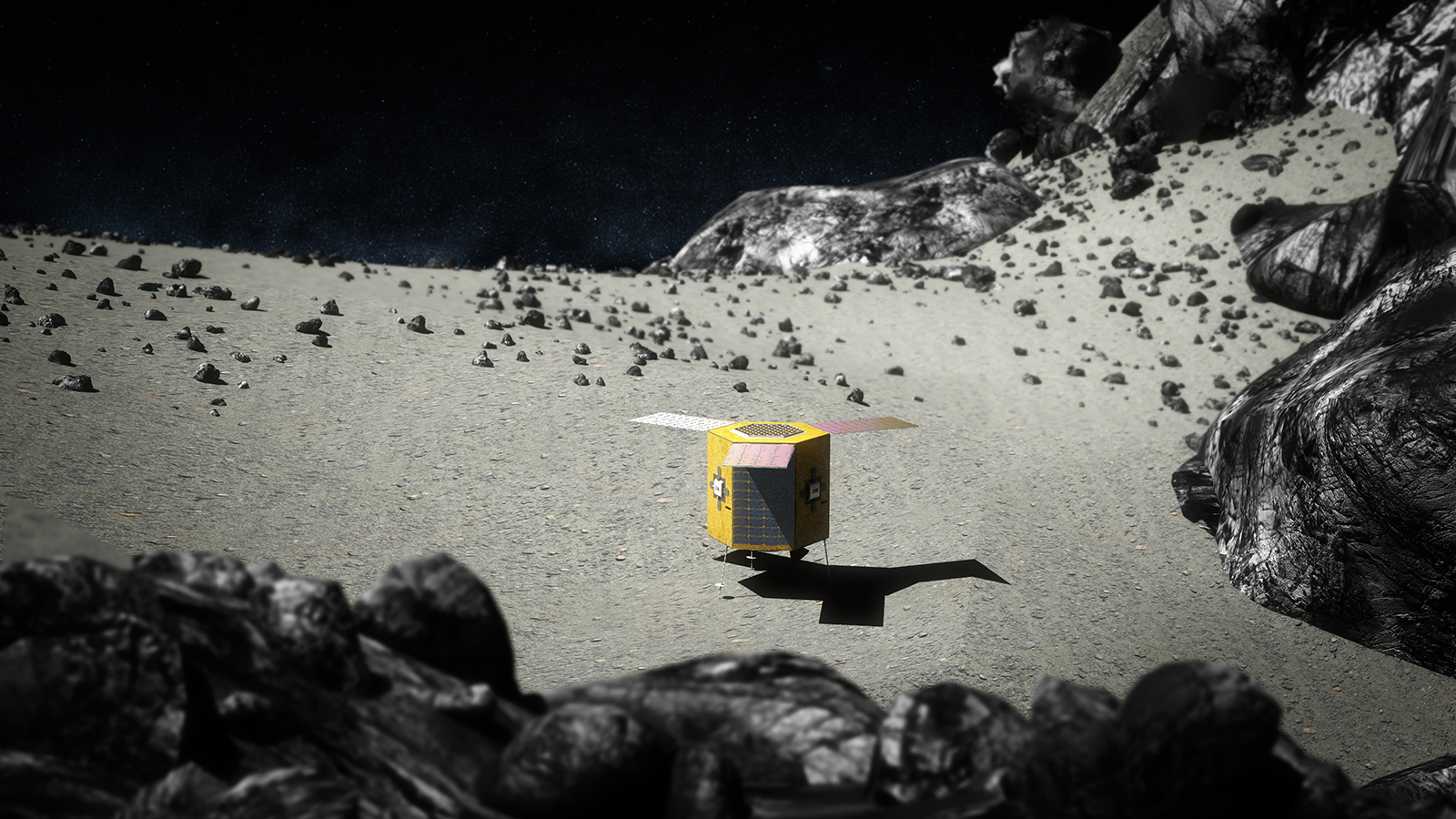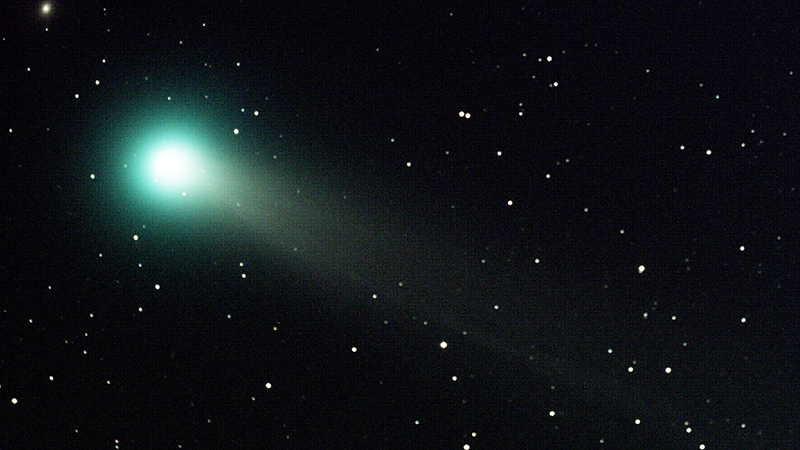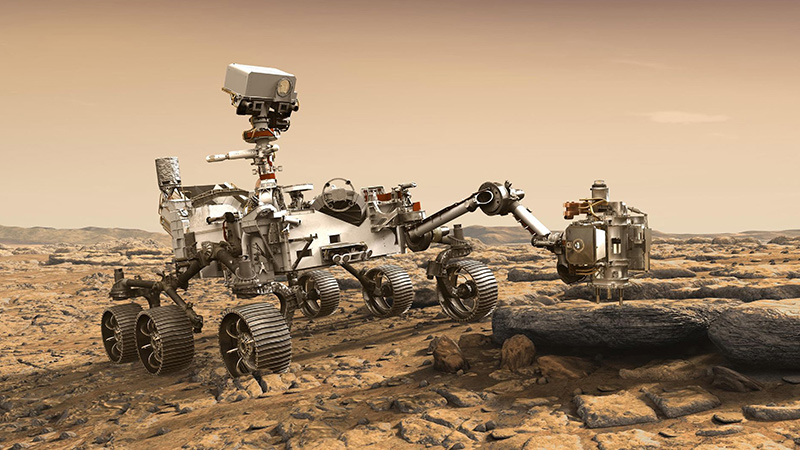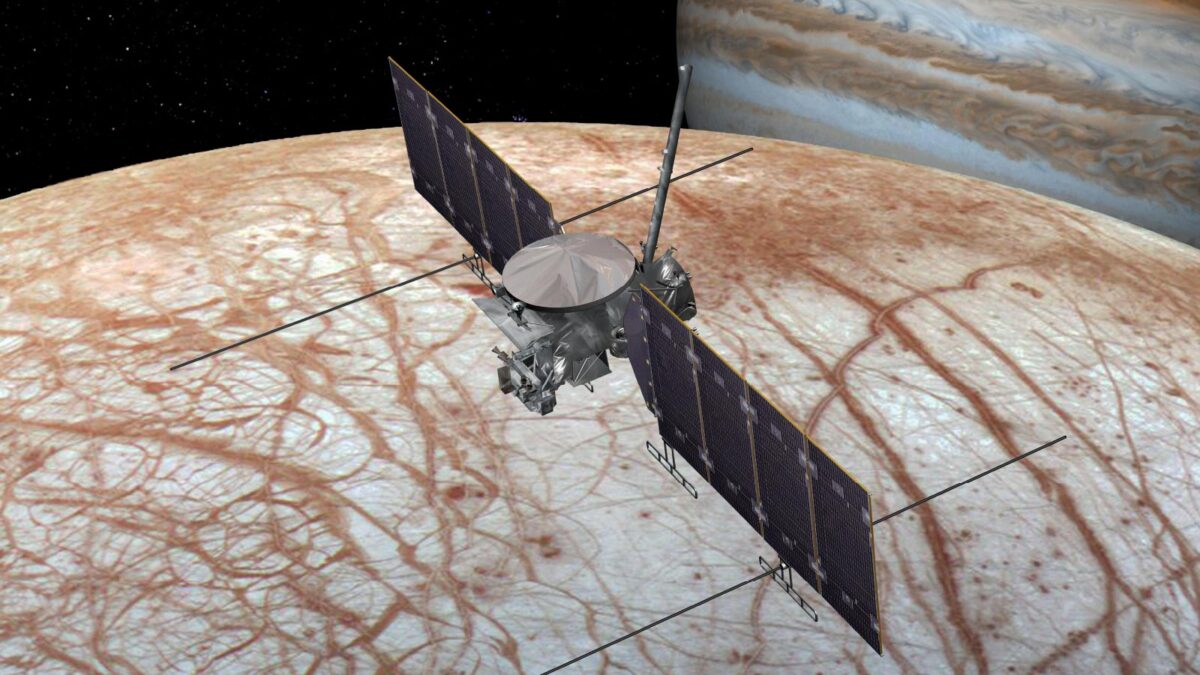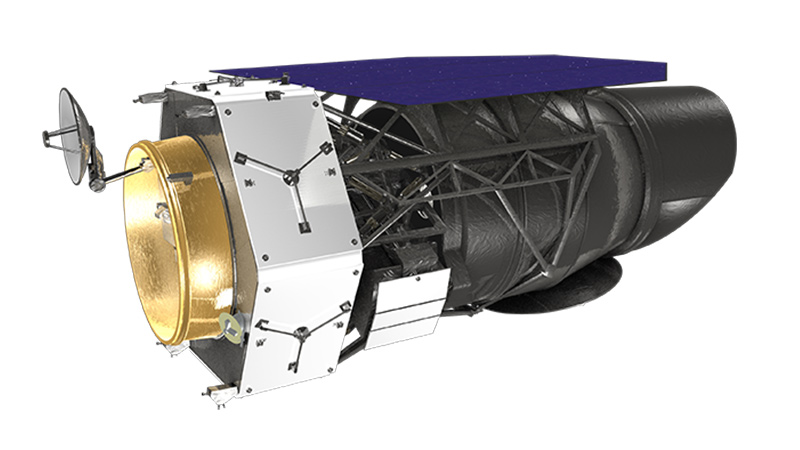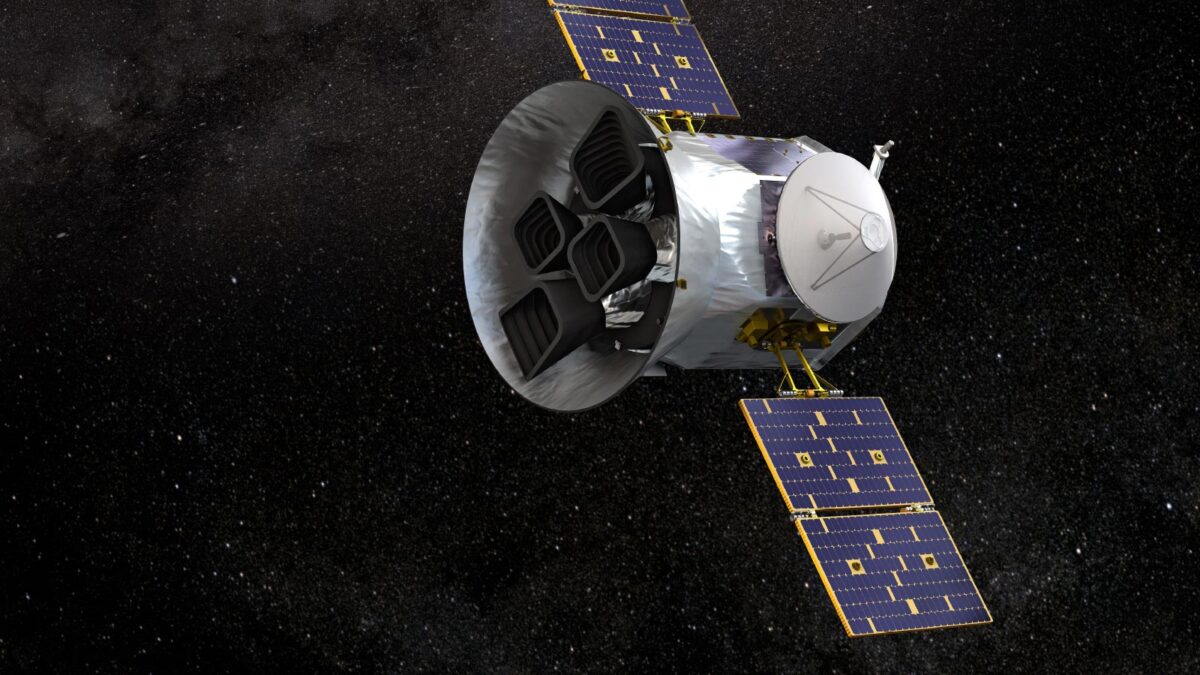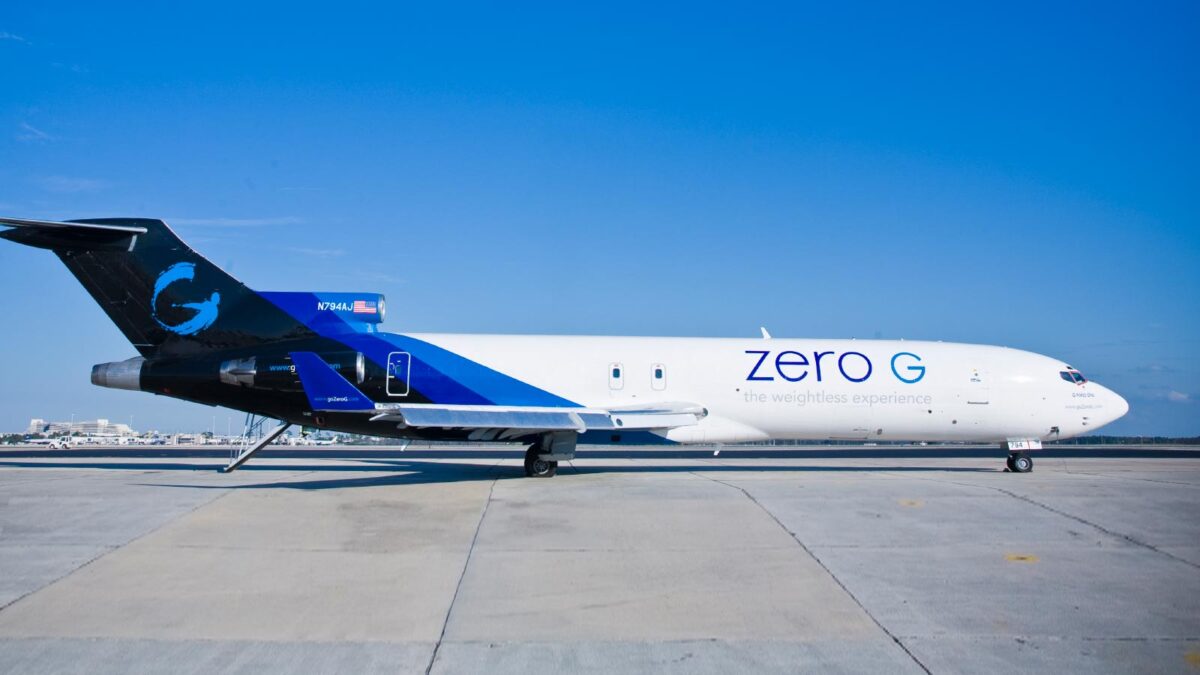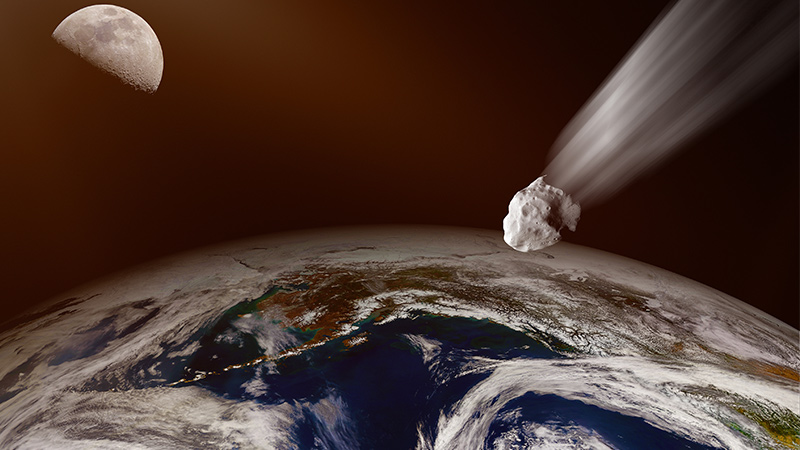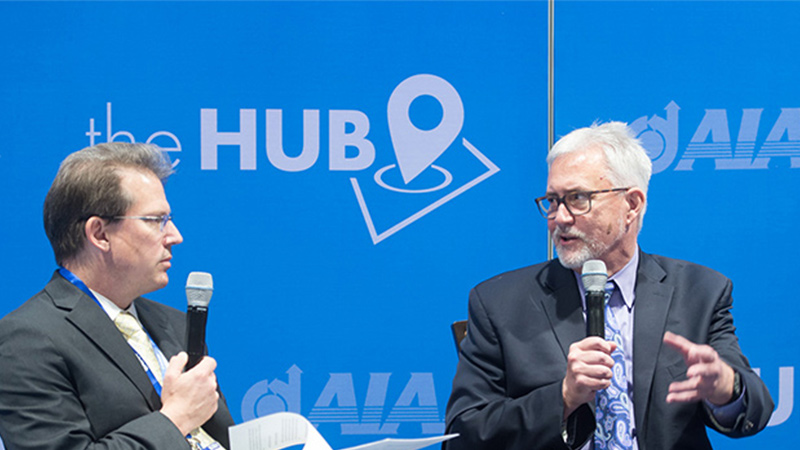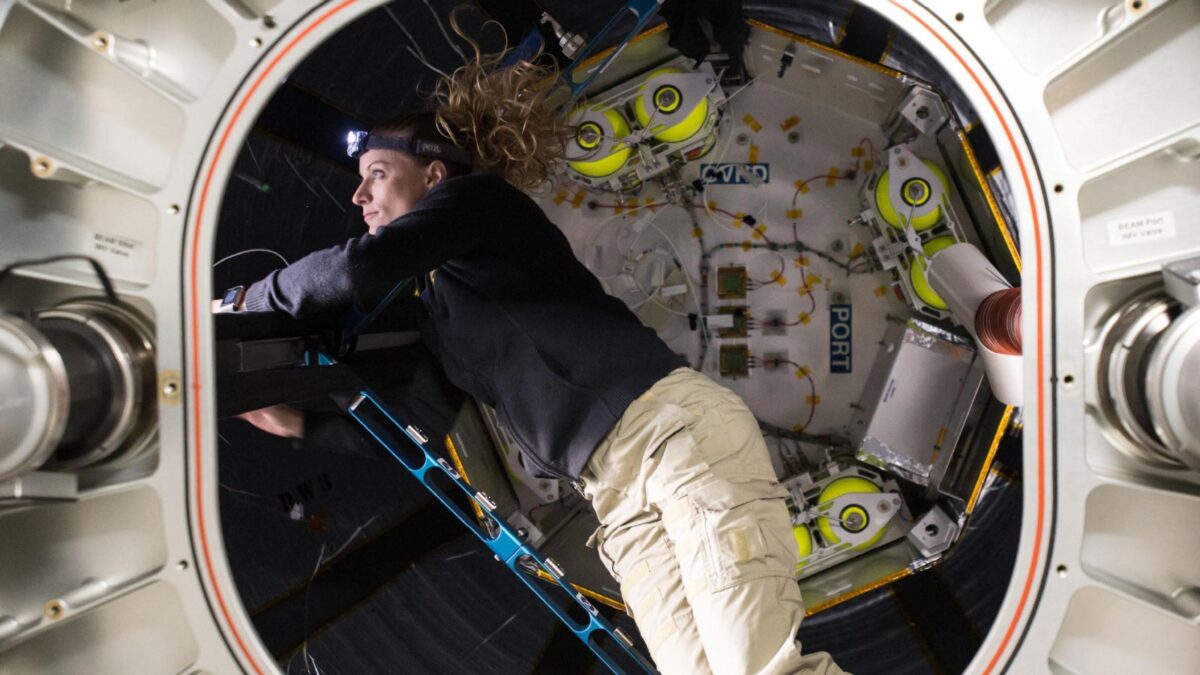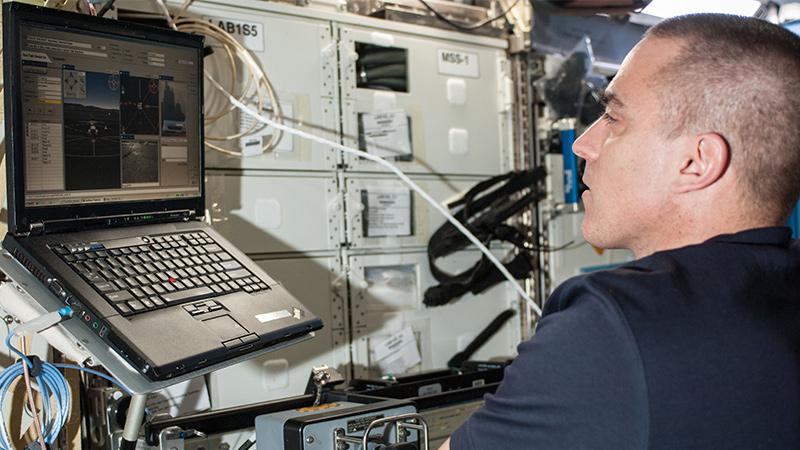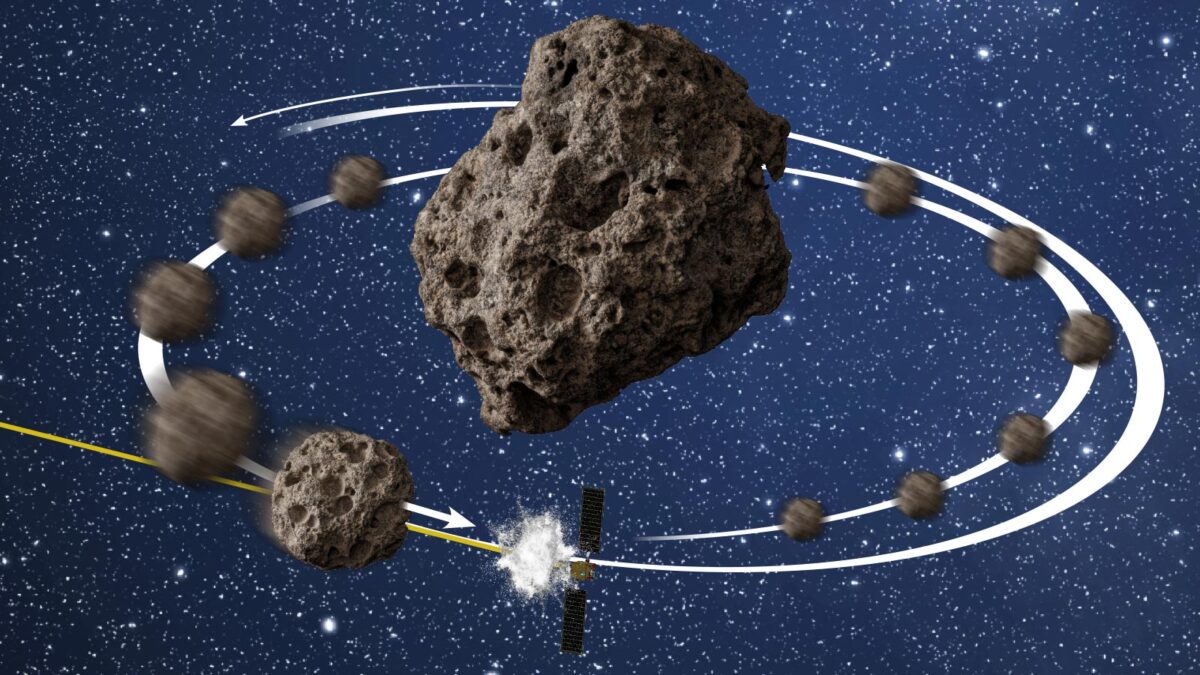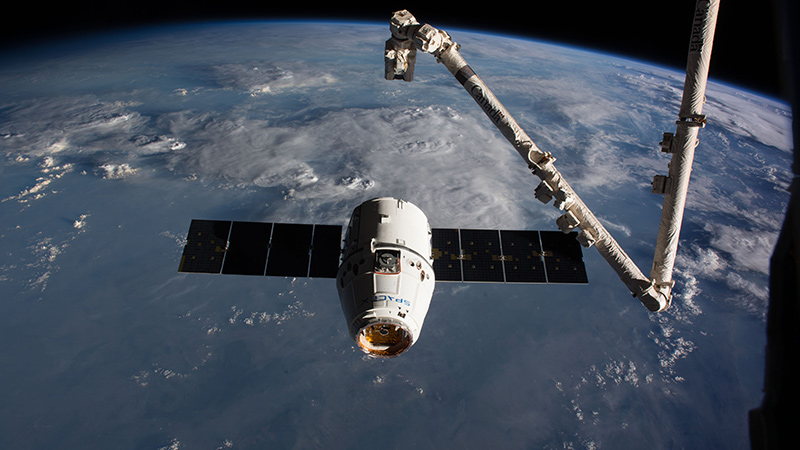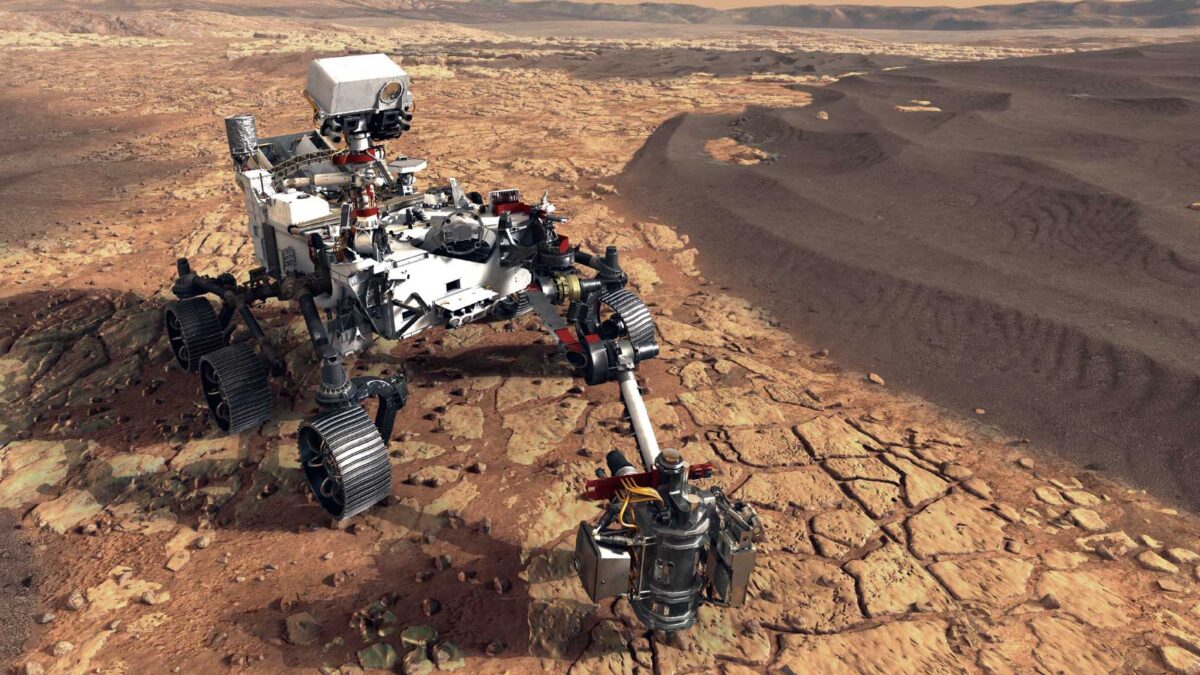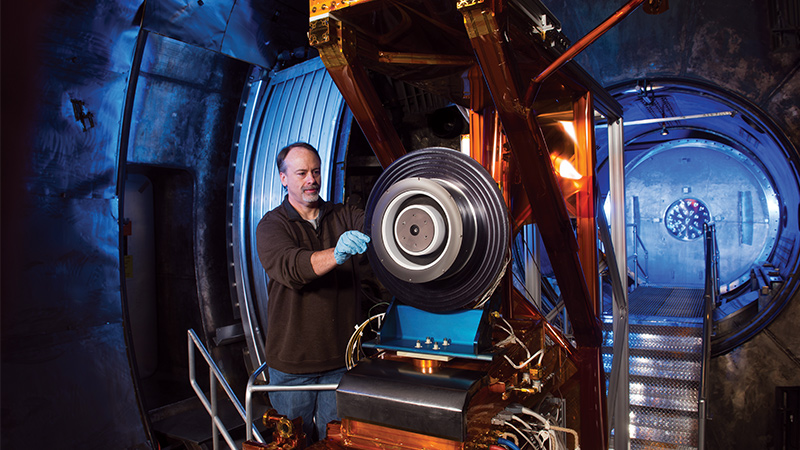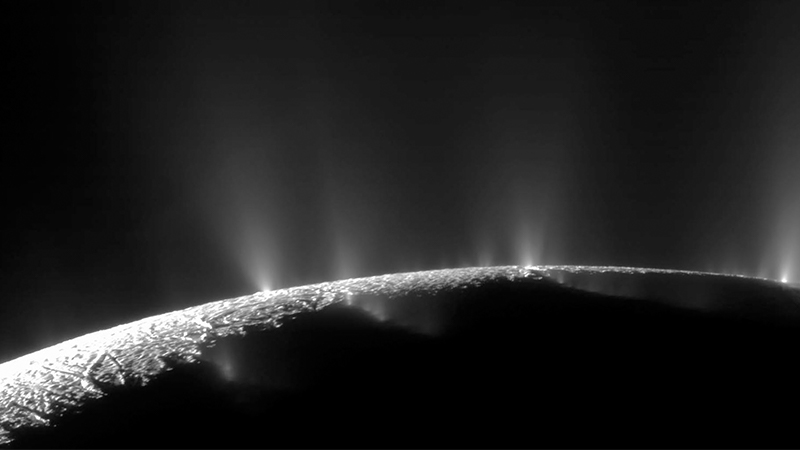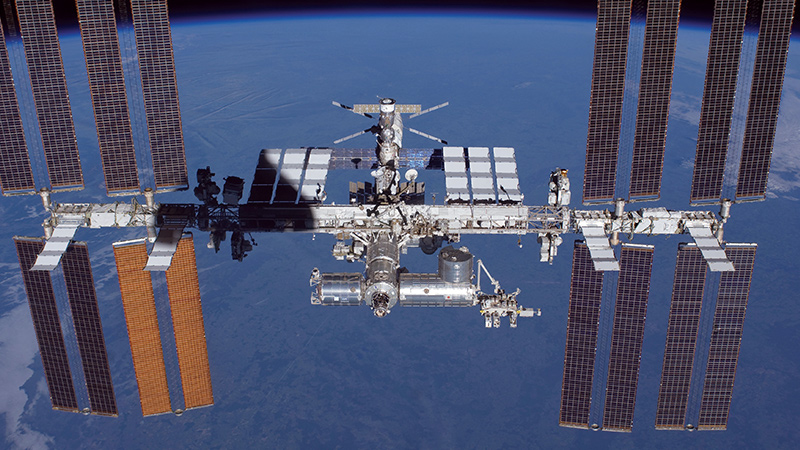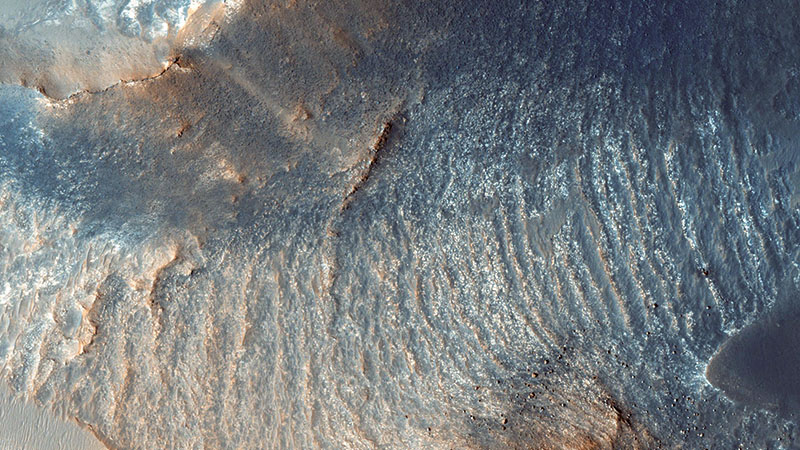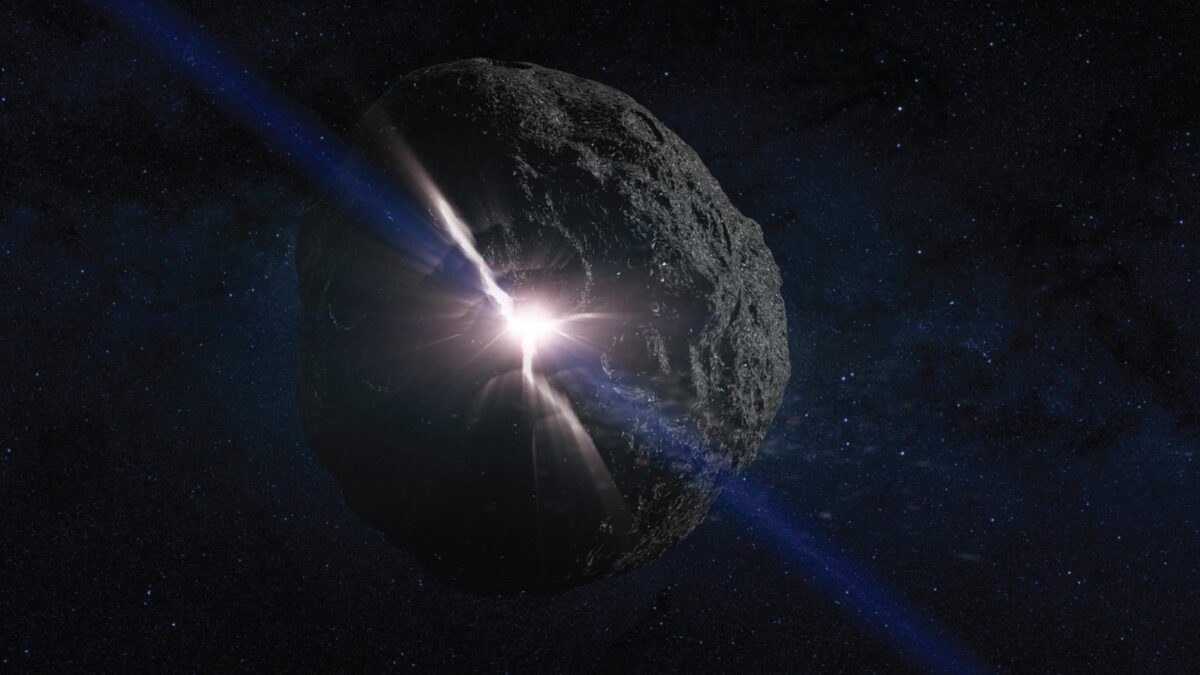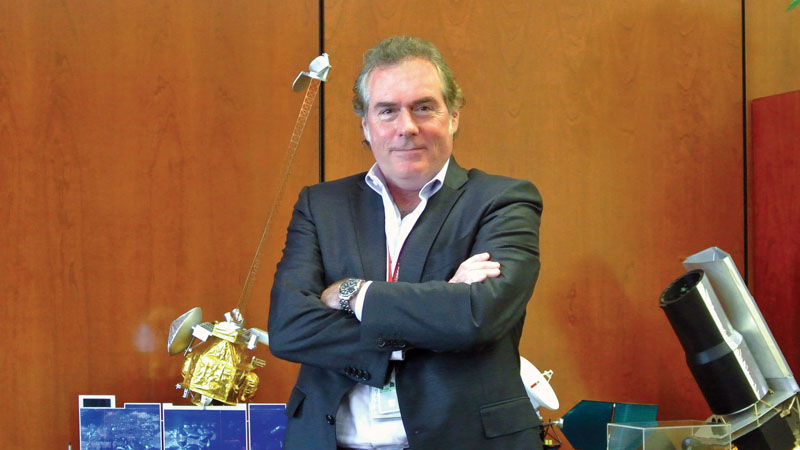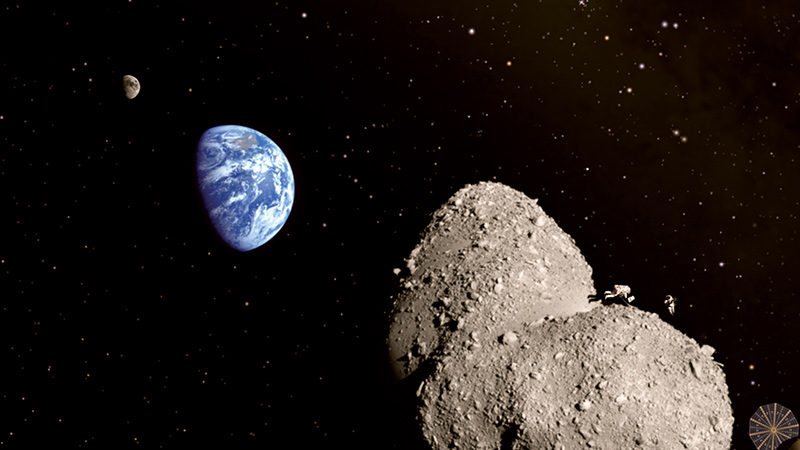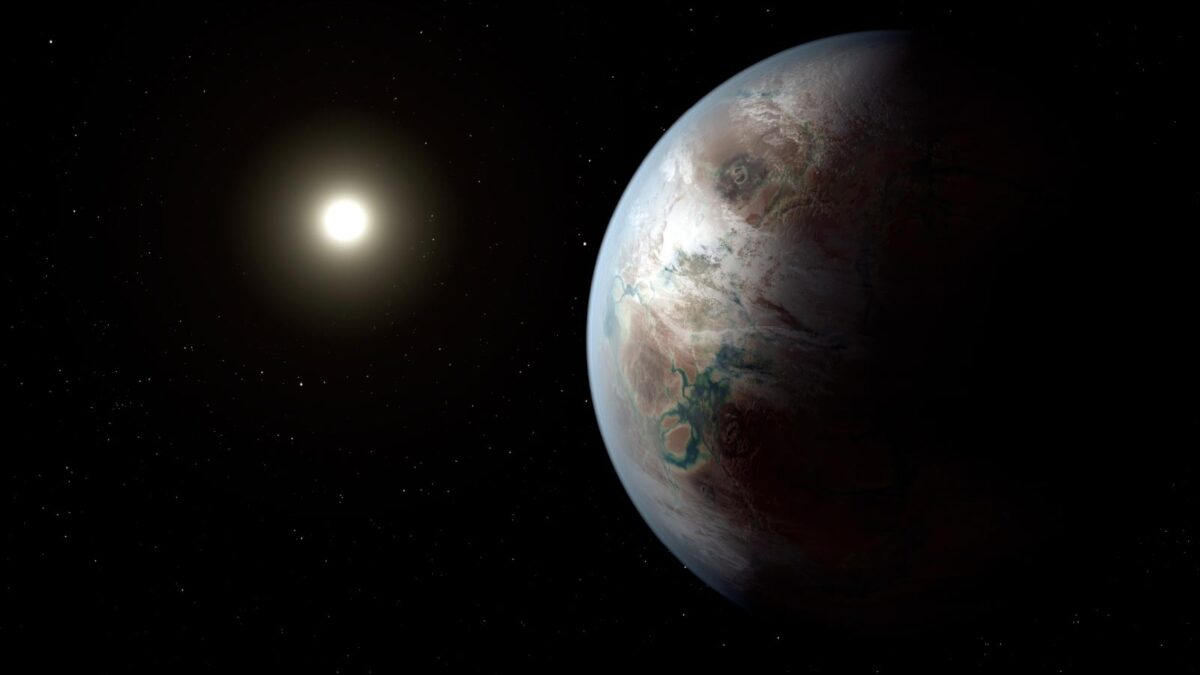By Keith Button
June 1, 2024
Editor’s note: NASA announced on July 17 that it intends to cancel the VIPER rover program. The launch readiness date had slipped to September 2025, the agency revealed, and it cited “risks of future cost growth.” The lander that was to carry VIPER is now targeted for launch in late 2025.
By Paul Marks
May 1, 2024
Spaceflight labs in China have devised concepts for Martian rotorcraft, including a quadcopter and an octocopter capable of scouting terrain and gathering samples. The designs could figure into whether China beats the U.S. in the quest to be first to deliver bits of Mars to Earth. Paul Marks analyzed the scientific papers.
By Keith Button
March 1, 2024
NASA may be years away from taking up a mission to explore the subsurface oceans of the icy moons Enceladus or Europa, but it continues to fund research into promising technologies for getting under the ice. Engineers at a Texas engineering firm last year made a breakthrough on one of the biggest challenges. Keith Button takes us inside the laboratory and field tests.
By Moriba Jah
March 1, 2024
January 1, 2024
NASA and its partners should draw on the success of the James Webb Space Telescope, recent bold thinking in astrophysics observatory architectures, and utilization of the latest commercial space practices to reduce cost and schedule while increasing scientific return of the next U.S. Great Observatory. Former NASA Administrator Daniel S. Goldin makes the case.
By Jon Kelvey
January 1, 2024
During the years NASA has been planning its Mars Sample Return mission, coders were busy charting an artificial intelligence revolution, while robotics engineers continued making ever more sophisticated machines. Is it time to consider analyzing the samples on Mars instead of bringing the rocks and dirt home to search for organisms or evidence of ancient life? Jon Kelvey asked the hard questions and learned the harsh realities.
By Jonathan Coopersmith
November 1, 2023
John C. Mather, astrophysicist and Nobel laureate
By Keith Button
September 1, 2023
A lot can go wrong when you’re trying to collect matter from deep space and bring it home. Your spacecraft could crash-land on its target, as a Japanese spacecraft did in 2005. Your capsule’s parachute could fail and the capsule could slam into the ground, breaking into thousands of pieces, as a NASA capsule did in 2004. Keith Button spoke to the team that aims to deliver bits of the asteroid Bennu home on Sept. 24 without any drama.
By Theresa Foley
May 1, 2023
Nicola Fox, associate administrator of NASA's Science Mission Directorate
By Karen Kwon
May 1, 2023
The James Webb Space Telescope has found dozens of previously unknown galaxies, including some that appear to be far bigger than expected for their age. Now scientists are questioning their theories about the early universe. Karen Kwon spoke to astronomers at the forefront of these discoveries.
By Jon Kelvey
February 1, 2023
Hollywood loves its comets, but many of those in the planetary defense field are more focused on the threat of an asteroid strike, given the long odds of a comet smashing into Earth. Who is right? Here’s what Jon Kelvey found out.
By Paul Marks
January 3, 2023
Ben Pipenberg, chief engineer of Mars Helicopter Programs at AeroVironment
By Paul Marks
September 30, 2022
A planetary lander that can fly to new sampling sites will be able to do far more surface science than a slow, trundling rover. Easy flight in the super-dense atmosphere and ultra-low gravity of Saturn’s cryogenic moon, Titan, makes it the perfect celestial body on which to test the idea. Paul Marks spoke to the team behind NASA’s Dragonfly.
By Jonathan O'Callaghan
September 1, 2022
NASA is starting to put together plans for a telescope that would launch in the 2040s to image Earth-like exoplanets and, perhaps, finally discover whether advanced life exists elsewhere. Jonathan O’Callaghan spoke to project scientists to learn how the work is unfolding.
By Leonard David
March 1, 2022
A chorus of scientists wants NASA to add small robotic spacecraft to its Mars Exploration Program in a shift from today’s near-total focus on multibillion-dollar rover missions and preparations with Europe to return samples of Martian soil and rocks to Earth. Will these scientists get their way? Leonard David looks at the odds.
By Ben Iannotta
March 1, 2022
February 1, 2022
Every do-it-yourselfer knows how hard it can be to declare a project complete. Will another turn of the bolt or brushstroke make things better or worse? That was roughly the choice NASA faced a year before the Dec. 25 launch of the James Webb Space Telescope. Would more testing close more technical risks in the nearly $10 billion project or create new ones? In the end, NASA decided against more testing. NASA’s Jesse Leitner and Tupper Hyde describe the assessment they performed.
By Adam Hadhazy
November 1, 2021
The long-awaited start of the James Webb Space Telescope draws close, with the promise of detecting the cosmic dawn and perhaps even signs of extraterrestrial life. Adam Hadhazy explores the key science motivations and goals for what will be, if all goes as planned in December, the largest telescope yet to reach space.
By Cat Hofacker and Ben Iannotta
August 24, 2021
July 1, 2021
On Earth, explorers centuries ago were probably confident about the range of bad weather they’d encounter along their journeys. Future Mars explorers cannot yet say the equivalent. That’s why NASA and others have adopted a strategy of sending weather sensors ahead of the humans. Anni Torri, a senior scientist at Vaisala, the Helsinki-based measurement company, explains what it takes to make a weather sensor space-proof.
By Amanda Miller
April 1, 2021
X-rays emitted by black holes, quasars and other features in deep space have a story to tell, but astronomers have yet to fully tune in by examining the polarization of the beams. Amanda Miller tells the story of a space observatory that could do just that after its launch later this year.
By Moriba Jah
February 1, 2021
By Moriba Jah
January 1, 2021
By Moriba Jah
December 1, 2020
By Ben Iannotta
September 1, 2020
By Adam Hadhazy
August 23, 2020
The United States and Europe are taking their first steps in a yearslong campaign to deliver rocks and soil from the red planet to terrestrial labs for unparalleled examination. Adam Hadhazy takes us step-by-step through the complex, yet in some ways conservative, mission.
By Adam Hadhazy
May 1, 2020
The U.S. Global Positioning System has changed how we operate spacecraft in low-Earth orbit. Now GPS is starting to do the equivalent for spacecraft flying beyond the GPS constellation, and someday possibly all the way to the moon, where positioning contributions from other nations could add up to stunning accuracy. Adam Hadhazy tells the story.
By Cat Hofacker
April 1, 2020
January 1, 2020
Defending Earth from “city killer” asteroids will require a partnership between governments and the burgeoning commercial space industry. Retired NASA mission planner Don A. Nelson makes the case.
By Cat Hofacker
October 1, 2019
By Amanda Miller
June 1, 2019
By Adam Hadhazy
June 1, 2019
UPDATE: Dragonfly wins. See News story – NASA has limited dollars for exploring the solar system with robotic spacecraft, and it can take a decade to get such a probe to its destination. Careers are made or stalled when NASA selects a proposed mission, which is why the agency’s latest New Frontiers competition is such a high-stakes affair. Adam Hadhazy spoke to the finalists vying for the prize.
By Adam Hadhazy
April 1, 2019
How China’s January landing on the far side of the moon is helping open this neglected other half to science and human utilization.
By Amanda Miller
March 1, 2019
Every square meter of Mars has been photographed from orbit; its dirt has been scooped up and heated to reveal its constituent chemicals; rovers have driven for kilometers. The surface of Mars, though, has never been dug so deep. That is set to change. Cracking the surface of Mars could deliver readings that will upend tenets about planetary evolution.
January 2, 2019
Scientists are detecting exoplanets daily by the slight decrease in light from a host star as a planet transits in front of it. Photos of such a planet could tell us whether or not we are alone in the universe. Louis D. Friedman and Slava G. Turyshev think they have a solution for delivering this photographic evidence, one that will require a 900 trillion-kilometer journey and applying a phenomenon discovered by Einstein.
By Tom Jones
October 31, 2018
NASA plans to spend $3.8 million over the next four years adding two telescopes to its asteroid search network to do a more complete job of detecting small objects as they are closing in on Earth.
By Ben Iannotta
September 27, 2018
By Amanda Miller
September 27, 2018
Precise navigation will be a necessity for safe human exploration of Mars and other celestial bodies in deep space. A pair of experiments about to get underway could change the way this navigation is done, and for the better.
By Ben Iannotta
August 31, 2018
By Tom Risen
August 31, 2018
NASA’s Parker Solar Probe, now on its way toward the sun, must survive the searing temperatures in the solar corona to unlock the processes driving the solar wind and coronal mass ejections that can harm satellites and electronics on Earth. We spoke to the scientists and engineers behind Parker’s thermal protection strategy.
By Adam Hadhazy
August 31, 2018
The BepiColombo mission to Mercury, getting underway in October, could answer vexing questions about the innermost planet’s core and its Earth-like magnetic field. And the answers could shed light on planetary matters far beyond our solar system.
By Tom Risen
June 6, 2018
NASA’s announcement that it will add a tiny helicopter to its planned Mars 2020 rover came after a series of test flights inside a vacuum chamber proved the feasibility of adapting consumer drone technologies into a craft capable of flying in an atmosphere just 1 percent as dense as Earth’s.
By Tom Risen
May 31, 2018
SIMON “PETE” WORDEN
April 30, 2018
A cadre of technologists and entrepreneurs think asteroids could be the linchpin for establishing an entire economy in space
By Tom Risen
March 30, 2018
March 30, 2018
Detonating a nuclear bomb is unlikely to protect Earth from a far-off asteroid or comet headed our way
March 30, 2018
NASA’s latest rover is in assembly at the Jet Propulsion Lab
By Tom Risen
March 30, 2018
NEIL DEGRASSE TYSON
By Tom Risen
March 30, 2018
The White House wants to steer the launch of NASA’s proposed Europa Clipper spacecraft to a commercial rocket
By Amanda Miller
March 30, 2018
The Trump budget would cancel development of the Wide Field Infrared Survey Telescope
By Ben Iannotta
February 28, 2018
By Tom Risen
February 28, 2018
Johann “Jan” Wörner
By Amanda Miller
February 28, 2018
The Transiting Exoplanet Survey Satellite aims to find Earth-like worlds
February 1, 2018
Options for conducting experiments are about to grow
February 1, 2018
Nuclear might be the best option against a meteoroid, engineer says
By Adam Hadhazy
February 1, 2018
By Ben Iannotta
February 1, 2018
DAVID E. BOWLES
By Adam Hadhazy
October 30, 2017
Science and manufacturing prospects on-orbit
By Tom Jones
September 28, 2017
Astronauts in Mars orbit could orchestrate complex exploration of the surface
By Adam Hadhazy
September 28, 2017
Managers of proposed mission hope to protect Earth from giant space rocks
By Adam Hadhazy
August 31, 2017
By Leonard David
August 31, 2017
A next generation robotic rover could start rolling across the Mars surface in 2021
By Keith Button
June 27, 2017
By Tom Risen
May 31, 2017
Andy Weir
By Ben Iannotta
May 19, 2017
By Ben Iannotta
May 18, 2017
By Tom Jones
May 1, 2017
Important research planned at the ISS
By Leonard David
March 6, 2017
By Ben Iannotta
February 9, 2017
DAVID D. MCBRIDE
By Michael Peck
February 9, 2017
Should the military have a greater role against wayward asteroids and comets?
By Ben Iannotta
November 22, 2016
Michael Watkins, director of the NASA-funded Jet Propulsion Lab
By Tom Jones
November 21, 2016
NASA planners see opportunities for robotic and human exploration
By Adam Hadhazy
July 30, 2016
Delivering photos of Earthlike exoplanets


